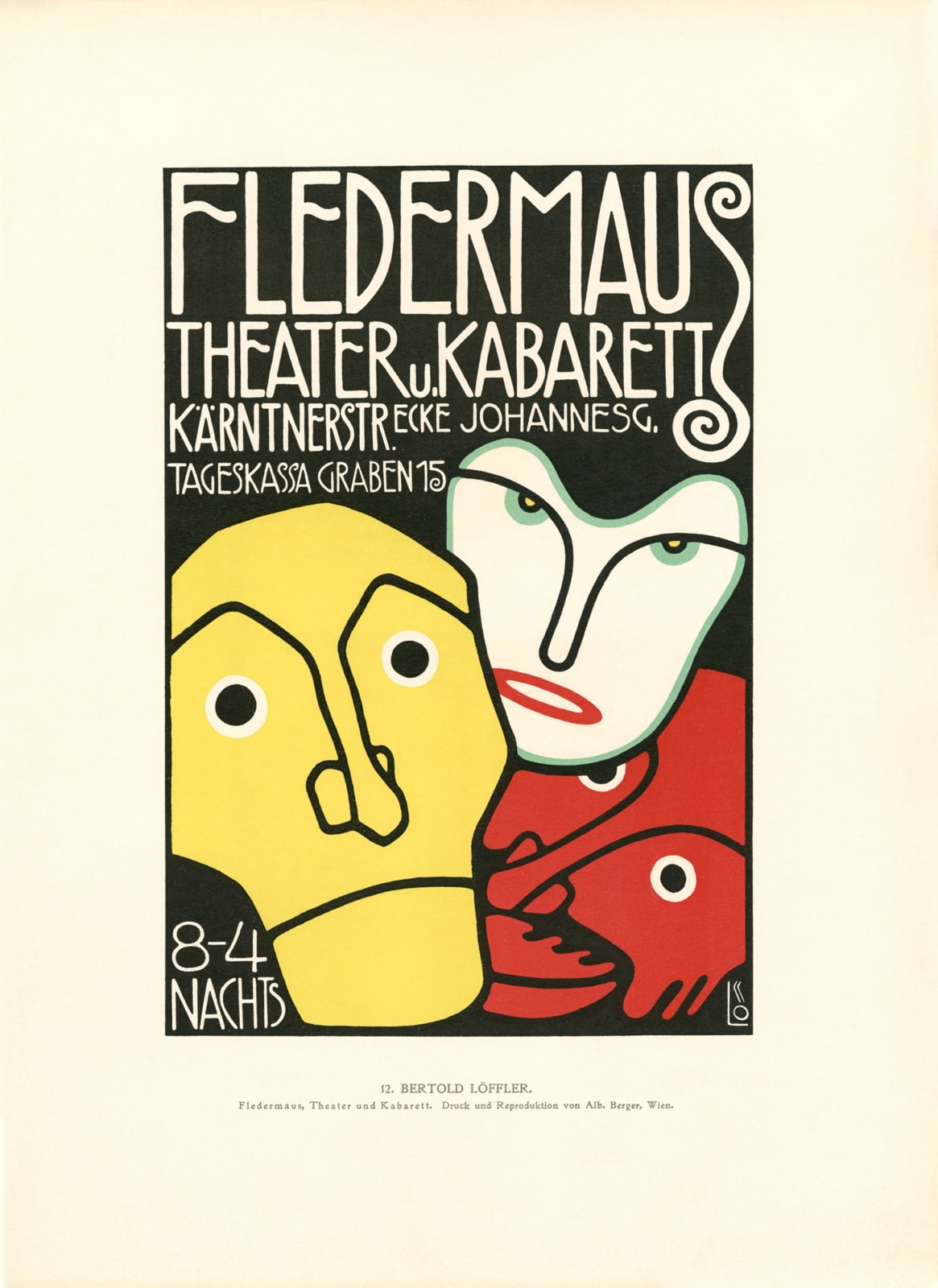Bertold Löffler Austrian, 1874-1960
1915
Austria’s foremost collector of poster prints, Ottokar Mascha amassed one of the largest international graphic art collections of the time. He was an active member in poster-collecting societies, and he gave generously to educational and other public institutions. In many cases, examples found in his collections were the sole survivors of an ephemeral medium whose delicate papers could not hold up over time to the damaging effects of animal glue, weathering, and other wear and tear from excessive handling. Mascha recognized that posters were not only cultural documents, but works of art. He devised ways to obtain pristine examples for his collection often through the police with whom posters needed to be submitted for approval prior to being hung in public. As Mascha explains in the forward and introduction of Plakatkunst, he saw a need in Austria for developing and promoting the poster as an artistic medium. His aims in publishing Plakatkunst were lofty; Mascha hoped to educate new and aspiring Austrian artists by exposing them to the possibilities the poster medium offered, and he hoped to develop a broader collector base through connoisseurship. His carefully selected examples of posters from his collection are archives of a nearly lost time. Preserved within this rare printed work are contextual links to Austria’s interconnected modern arts culture of which the Vienna Secession played a central role. Like the members of Vienna’s Secession, Mascha believed that modernity required a new definition of Art and that old hierarchical notions were out of touch. Creating a leveling force in the arts, where graphic and applied arts are valued equally as painting, sculpture and architecture, was an over-arching goal many were grappling to achieve at this time. He also shared the belief that, whether native or adoptive, there was, indeed, an Austrian sensibility whose zeitgeist he wanted to capture and preserve. For him, it was a question of accessibility. Today, bombarded as we are with digital and graphic images and their instant access we have literally at our fingertips, it is easy to forget that 100 years ago this was simply not the case. Plakatkunst, was, and is, an invaluable resource; it is a bold statement which continues to resound that the artistic merit of successful posters will stand the test of time.



